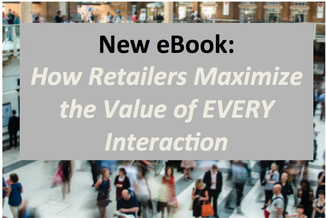With all the new entrants and a different playing field, loyalty marketers are not ruing as they did in the good old days when they had the consumer gaming dynamic all to themselves. Quite the contrary -- there is palpable excitement surrounding what the growing shift in consumer behavior means for their programs. Armed with a seemingly endless choice of game mechanics, technology platforms and social networks to enable new programs and a new set of consumer experiences, the loyalty sector is now more relevant than ever.
Gamification -- It’s a silly, made up-word that's suddenly everywhere. I see it constantly in my Twitter feed, and it was in a particularly strong spotlight at the recent Loyalty Expo in Orlando among the major retailers and brands. But it's not a new concept. For years, everyone in the loyalty space has leveraged a system of points to reward and retain customers in a way that drives sales. It has always been a game that retailers and consumers play. So what made the buzz this year any different -- except for the nonstop use of everyone's favorite new “word?”
Everyone is a gamer now
First and foremost, consumer behaviors are changing. Gaming has always existed in the consumer psyche, as evidenced by the age-old art of haggling, whereby a consumer works an angle for a discount or conversely, a retailer uses techniques of chance to conduct a sale. But think for a moment about how much consumer behavior has changed just in the past couple of years. People are spending an inordinate amount of time building farms on Facebook, checking into Foursquare for badges, hunting down “deals of the day” and exchanging virtual credits for real or imagined goods. In the casual gaming industry, business is booming in all directions -- and loyalty marketers, with a touch of drool, are paying close attention.
Multi-player means competition
The rapid acceleration of gaming as a behavior isn’t purely good news for marketers. There are indeed some drawbacks to this adoption. Now that the gaming industry has infiltrated social networking and everyday life, the once clever approach that brands took to ‘gaming’ with consumers can now seem stale and out of touch.
For loyalty marketers that once enjoyed the relative isolation of their programs, many are now directly or indirectly up against a new set of non-traditional competitors that offer more rewards for a consumers’ time and a better gaming experience. Many platforms such as location-based and deal aggregation now have timeliness and relevance written into their DNA -- and are winning points in the time-strapped and over-spammed attention economy.
New opportunities abound
With all the new entrants and a different playing field, loyalty marketers are not ruing as they did in the good old days when they had the consumer gaming dynamic all to themselves. Quite the contrary -- there is palpable excitement surrounding what the growing shift in consumer behavior means for their programs. Armed with a seemingly endless choice of game mechanics, technology platforms and social networks to enable new programs and a new set of consumer experiences, the loyalty sector is now more relevant than ever.
Three Points to consider: upping your loyalty game
First, marketers will need to resist the urge to over-game a rewards program. All the bells and whistles, while tempting to a loyalty manager, can work against the most important factors -- timeliness, relevance and illustrating to consumers that you “get” them. Put another way: who wants to enter a gaming labyrinth to earn a free soda at the end?
Second, channel-optimized loyalty offerings are still essential. While a simple game-driven program may play well on an application, game-happy loyalty managers must find a way to provide a similar rewards and engagement system across all touchpoints. Rewards should be influenced by the channel in which they are offered.
Finally, and as always, a sound communication strategy is essential. Many loyalty programs fail to communicate sufficiently how to get rewards, the value received to date in the loyalty program, or even rewards expirations. Tell me what I get for giving you my attention and support -- without me having to ask!



